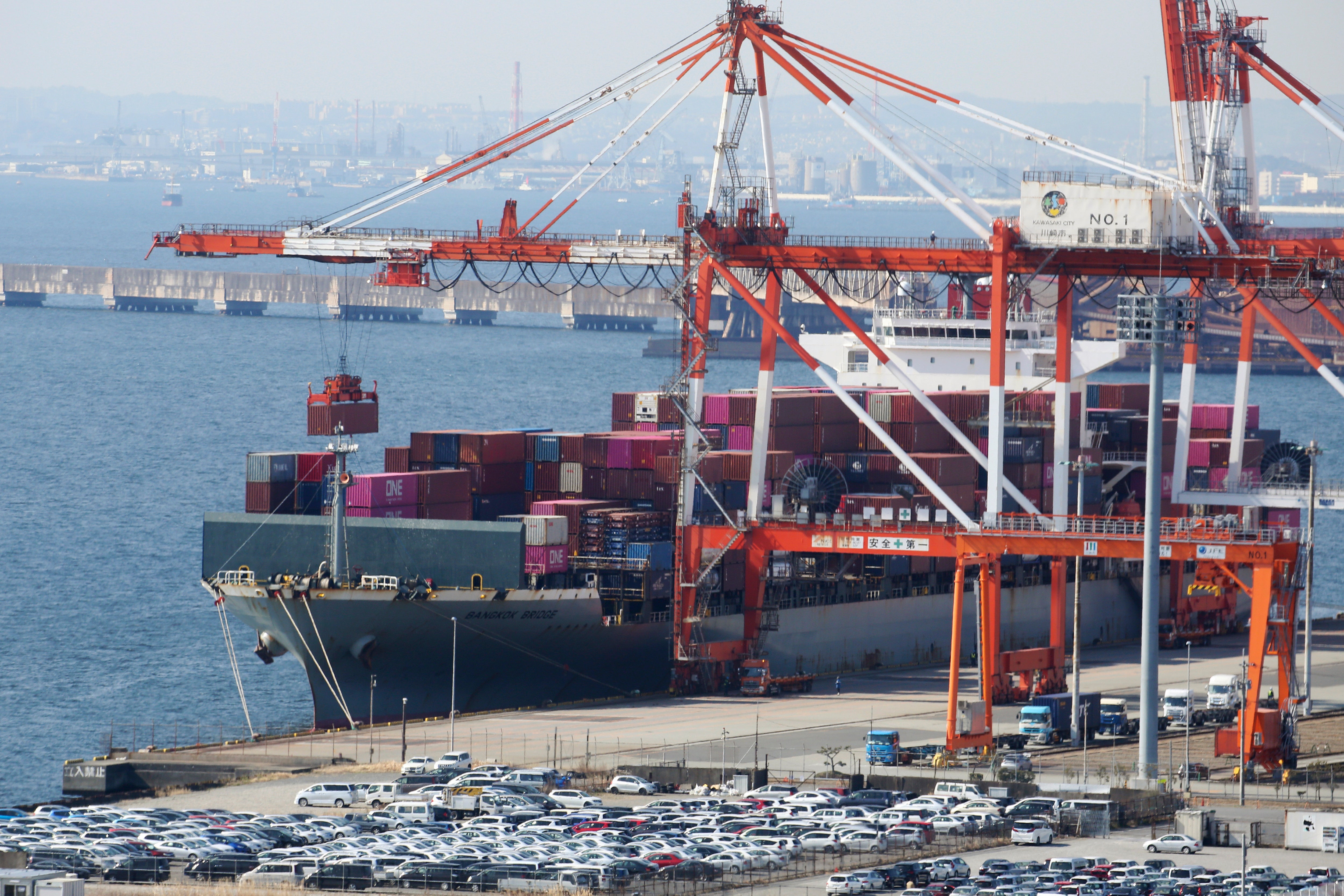Japan's exports surge 10% in December on strong demand for autos, revived trade with China
Japan has reported its exports surged almost 10% in December from a year earlier, helped by a revival in trade with China and strong demand for vehicles

Japan's exports surged almost 10% in December from a year earlier, helped by a revival in trade with China and strong demand for vehicles, machinery and computer chips.
Imports fell almost 7%, leaving a trade surprise of 62 billion yen ($410 million), according to preliminary customs data released Wednesday.
A weak Japanese yen has helped export manufacturers like Toyota, Honda and Sony, though it increases costs of imports of key commodities like oil and gas needed to fuel the world's third-largest economy.
A decline in oil prices helped reduce the burden of energy imports in December, which fell by 18% from a year earlier.
A recovery in demand in China contributed to a 10% increase in exports, while imports from China were flat.
Another boost came from a surge in tourist arrivals, which are counted as exports in trade statistics.
The improvement late in the year “means that overall net exports should have made a significant contribution to GDP growth in the fourth quarter," Gabriel Ng of Capital Economics said in a report. But he added that “Looking ahead, we expect export growth will be sluggish this year.”
Data from a preliminary survey of factory managers also released Wednesday likewise showed weakness in the export manufacturing sector, with "new export orders” falling to 46.0 from 46.4 on a scale up to 100 where 50 marks the cut-off between expansion and contraction.
Exports to the U.S., Japan's single largest export market, jumped 20% in December from the year before, while imports of U.S. goods fell 7%.
Shipments of cars rose 16% in unit terms, to 1.47 million vehicles, and more than 35% in dollar value. Power generation equipment, construction machines and semiconductors also showed strong growth.
For the full year, Japan’s exports grew 3%, to 100.9 trillion yen ($680 billion) and imports fell 7% to 110.2 trillion yen ($740 billion). The trade deficit was 9.2 trillion yen ($62 billion), down sharply from a deficit of 20.3 trillion yen in 2022.